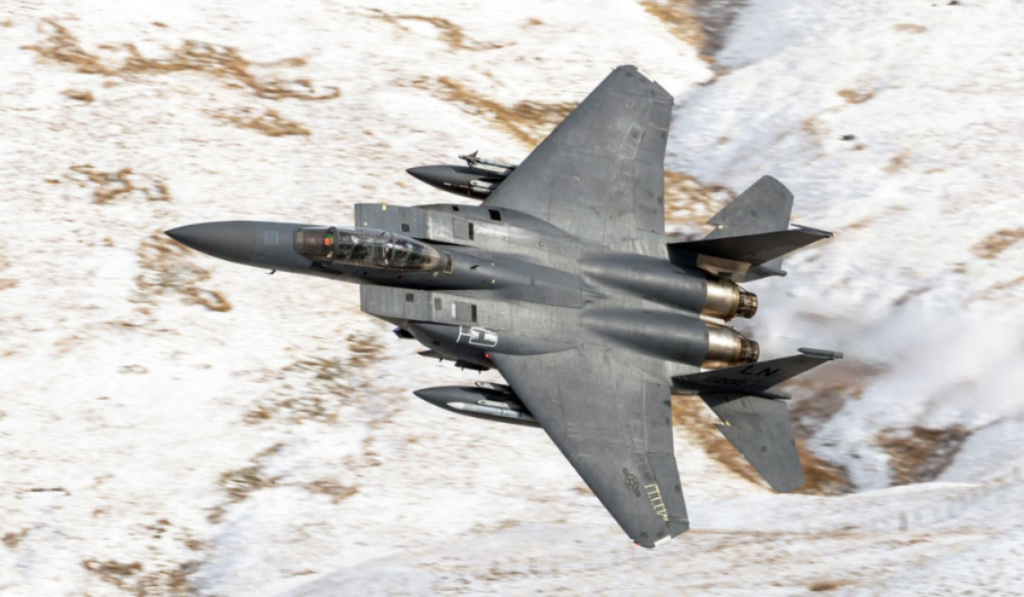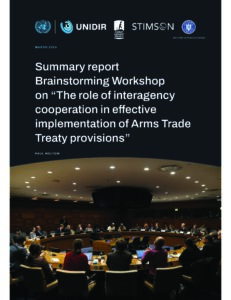Editor’s note: This analysis is part of 2020 Presidential Inbox — an ongoing Stimson Center series examining the major global challenges and opportunities the next administration faces.
The Problem
Poorly managed and/or misused weapons cause considerable harm and embolden bad actors, compounding security challenges and increasing human suffering. Responsible arms transfer policies support stability and security while upholding the values of human rights, the protection of civilians, and multilateral cooperation. While the United States has traditionally maintained one of the world’s most robust arms transfer control systems, recent policies risk backtracking on key responsibilities and ultimately undermining these vital U.S. interests.
Essential Context
Current CAT policy is Notable Shift from Past
Less than 18 months after entering office, the Trump administration released a new conventional arms transfer (CAT) policy. The policy represents a notable shift in the United States’ approach to arms transfers by emphasizing the U.S. economy and supporting the defense industrial base, rather than viewing arms sales predominantly as tools to help achieve foreign policy goals and further U.S. national security interests. Such an approach risks overlooking other crucial issues, such as the likelihood that U.S. weapons could fall into the wrong hands or be misused.
The CAT policy was most recently updated in 2014 by the Obama administration, the first update in nearly 20 years following the 1995 directive created by the Clinton administration. Although the overarching security challenges have not changed in the Trump administration’s policy update – it also focuses on counterterrorism and non-proliferation – the Trump administration’s CAT policy is a departure from the past, reflecting and reinforcing President Trump’s “Buy American” and “America First” approaches.
Irresponsible Arms Trade Undermine U.S. Interests
The Trump administration wants the United States to sell more weapons. Yet, the United States is already the unrivaled arms exporter in the world, making more than $55 billion in government-negotiated arms deals in 2018 and accounting for 36 percent of global arms exports. The United States sells to more governments than ever before and the 2018 CAT policy envisions selling more arms to existing recipients.
However, a short-term focus on economic benefits overlooks the realities of the global arms trade, in which the weapons sold and transferred remain useful long after the sale is completed and can be used to either promote or undermine U.S. interests. For example, U.S. weapons and vehicles supplied to the Iraqi military were later seized by ISIS and used against U.S. troops.
Human Rights Concerns Largely Absent from Current Policy
One significant positive addition to the 2018 CAT policy is that it is the first such policy to include explicit reference to reducing the risk of civilian harm that might result from the transfer and use of conventional weapons. The policy mandates that the executive branch “facilitate ally and partner efforts, through United States sales and security cooperation efforts, to reduce the risk of national or coalition operations causing civilian harm.” It is unclear, however, how principles of civilian protection are and will continue to be prioritized and implemented in U.S arms sales decisions, as the administration continues to support – through arms sales and other military assistance – military campaigns that have caused significant civilian harm and humanitarian crises.
The revised framing of the CAT policy is important, as the 2018 update focuses heavily on the benefits of arms exports at the expense of examining certain risks inherent in such transfers. Perhaps the most consequential effect of this approach is that the Trump administration will no longer require the past behavior of a recipient country to be factored into arms transfer decisions. Indeed, the 2018 CAT policy eliminates a decision-making criterion that examined a recipient country’s record of behavior on human rights, counterterrorism, and the potential for misuse. Instead, the 2018 policy focuses on the potential future risk of a transfer. This approach implies that as long as buyers don’t intend to misuse U.S. weapons, the risks associated with such transfers can easily be overlooked if the transfers are in the economic interest of the United States.
Unfortunately, the United States has overlooked human rights abuses and humanitarian concerns repeatedly. For example, U.S. arms sales to Saudi Arabia and the United Arab Emirates (UAE) have consistently flouted human rights and international humanitarian law commitments. In April 2019, Congress passed a bipartisan resolution that would end U.S. military involvement in the Saudi-led coalition operating in Yemen’s civil war. President Trump vetoed the resolution and declared a national emergency to bypass Congress and sell over $8 billion in weapons to Saudi Arabia, the UAE, and Jordan, in addition to previously approved armed sales to Saudi Arabia and the UAE valued at more than $20 billion and approximately $5 billion, respectively.
Prioritizing Economic Benefits Overlooks Additional Risks in Arms Transfers
In a step that further demonstrates the Trump administration’s hostility towards mitigating the risk of arms sales, in April 2019, President Trump announced the United States would unsign the international Arms Trade Treaty (ATT). The treaty promotes responsibility and transparency in the global arms trade by prohibiting certain kinds of arms transfers and establishing specific criteria for making arms transfer decisions — all of which are already reflected in U.S. law and regulations. The United States informed the ATT depositary (the United Nations) in July 2019 of its decision to no longer be bound by the object and purpose of the treaty.
Moreover, the Trump administration is seeking to change the way weapons are regulated under the American export control regime, which could allow U.S. arms to more easily fall into the hands of nefarious and irresponsible actors. The Obama administration undertook comprehensive reform of export controls, significantly restructuring the U.S. Munitions List and moving oversight and control of some weapons from the State Department to the Commerce Department. In May 2019, the Trump administration revealed its proposal to transfer export controls of semi-automatic pistols, assault-style firearms, sniper rifles, and ammunition from the State Department to the Commerce Department. This change will undermine congressional oversight and exacerbate the risk of international gun violence, human rights abuses, and armed conflict.
In prioritizing perceived economic gains, the Trump administration is overlooking potential risks in its arms transfer decisions that could lead to considerable consequences in the long run. Although the policy may allow the United States to export more arms in the short-term, the policy also risks undermining long-standing U.S. principles, values, foreign policy objectives, and security interests in the long term.
Policy Recommendations
- Connect Sales to Safeguards. Align arms sales with the needs, capabilities, and conduct of partners to ensure human rights and humanitarian safeguards that support international norms and standards, including on civilian protection. Vigorously enforce existing law by restricting transfers to nations engaged in systematic patterns of human rights abuses and violations of the laws of war
- Stop Saudi, UAE Sales. Halt all arms sales to Saudi Arabia and the UAE that could be used to persecute the war in Yemen.
- Recommit to the Arms Trade Treaty. Inform the United Nations that the United States will, in fact, abide by its Arms Trade Treaty obligations as a signatory to the Treaty and begin educating the Senate on the facts and benefits of the ATT, with a view towards eventual ratification.
- Restore export oversight of firearms to the State Department. Reverse plans to move large categories of firearms and other lethal weapons from the jurisdiction of the State Department to the Department of Commerce, where they will be subjected to less transparency, oversight, and Congressional scrutiny.
- Refocus arms transfer policy. Issue a new Conventional Arms Transfer policy that emphasizes human rights and strategic considerations over economic concerns.




